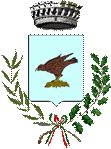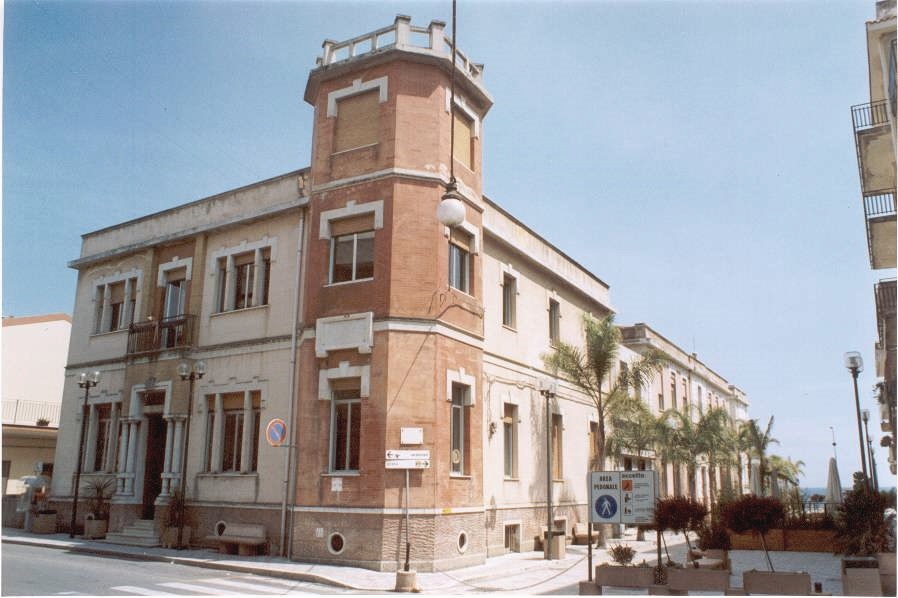

Il Paese di Alì Terme vanta un’antichissima origine. Dal manoscritto di Padre Serafino “La colonia fondò la sua prima abitazione nella Marina di Alì, vicino al promontorio Argeno detto ‘Capo Grosso’, nella cima e sulla pianura di questo promontorio chiamato oggi Migliorvino o Mollerino. Quivi furono ritrovati i resti di quell’epoca lontana: un pavimento fatto a mosaico, mattoni antichi, resti di ossa umane, gallerie sotterranee, monete, lampade di terracotta ed altro…”. Sul promontorio, infatti, sono stati rinvenuti resti di antiche fortezze per difendersi dagli attacchi dei Saraceni. Ma stanchi delle continue molestie gli abitanti si ritirarono sul Monte Saturnio o Netturnio (detto poi Sparverio, Spaverio e infine Scuderi). Su questo monte era un buco tortuoso ove scendevano i curiosi in cerca di tesori. Ma il monte pur offrendo sicuro rifugio costituiva una fonte di disagio a causa delle intemperie. Fu così che gli abitanti si trasferirono più in basso e chiamarono il nuovo centro abitato Elim, che fu poi tramutato in Alì.
Alcuni scrittori sostengono che il nome potrebbe derivare da Ali poiché il Monte Scuderi sembrava avesse due ali e così il paese fu chiamato “Paese delle Ali”, modificato poi in Alì. Infatti, lo stemma raffigura uno sparviero su fondo azzurro con le ali argentate aperte nell’atto di sollevarsi dal monte.
Quando Messina fu assediata dai Cartaginesi gli Aliesi prestarono aiuto ma, tornando in paese lo trovarono distrutto dai Saraceni. I Messinesi allora aiutarono la popolazione nell’opera di ricostruzione.
Nel 1674-78 venne nuovamente saccheggiata dai Saraceni che vi rimasero fino al 1800. Con la loro espulsione il Conte Ruggiero fece edificare l’Abbazia di San Pietro e Paolo di Itala, concedendo al primo Abate Gelasio, in commenda, i paesi di Alì e di Itala che esercitò su essi il potere temporale.
Nel 1886 i beni monastici furono soppressi e le proprietà furono divise tra i due paesi.
In origine e sino al 1910 il paese era denominato Alì Marina ed era frazione di Alì.
Nel 1910 si staccò come Comune autonomo ed assunse grande importanza a causa dello sviluppo del turismo balneare e termale tanto che fu Alì ad essere aggregato ad esso sino al 1946 quando questo riottenne la propria autonomia.
Nel 1954 il paese fu rinominato Alì Terme per la presenza nel suo territorio di acque terapeutiche di cui godeva fama già nell’antichità già citate nel manoscritto di Padre Serafino.
Il chimico messinese Gioacchino Arrosto dichiarò che queste acque contenevano una tale quantità di iodio da renderle più pregiate e salutari fra le acque dell’intera isola.
Le proprietà di queste acque furono riconosciute dall’Accademia di Gioenia di Catania e dal famoso geologo Padre Barnaba La Via e citate dal Reina.
Per lo sfruttamento delle acque termali esistono due stabilimenti: Granata Cassibile e l’altro è quello dei Marino. Verso il 1500, la famiglia Granata iniziò lo sfruttamento di queste acque, che venivano raccolte in vasche scavate nella roccia. All’inizio del XIX secolo, dopo tre secoli e mezzo di tali attività allo stato rudimentale, la famiglia Granata (nel 1895) vendette le terme alla Marchesa di Cassibile che ribattezzò lo stabilimento “Rinomata Terme di iodio–idro–carbonico–solforosa”. Infine le terme passarono ai fratelli Sterrantino. secondo stabilimento di proprietà del fu Sig. Giuseppe Marino, è oggi gestito dai suoi eredi. Esso è situato un po’ a monte presso la strada ferrata e la stradale che conduce ad Alì. Le sorgenti delle terme Marino erano famose per la loro abbondanza di iodio, utile per la cura della malattia di ricambio, della uricemia e degli stati anemici
Nel 1946, dopo vari sondaggi del terreno, venne iniziata la lutoterapia. La qualità dei fanghi naturali ed i risultati terapeutici fecero sì che le sorgenti termali fossero conosciute fin dai tempi più lontani, come testimonia la lapide affissa sul muro esterno dello stabilimento termale Marino.
In passato il turismo termale era molto di moda tra le persone dell’alta società.
Attualmente le terme vengono usufruite frequentemente solo nei mesi estivi.
Da Alì Terme è possibile effettuare delle interessanti escursioni nel territorio circostante.
(English)
The town of Alì Terme has very ancient origins. From the manuscript of Padre Serafino (Father Serafino) “ The colony founded its first dwelling in the Marina of Alì, near the Argeno promontory called “ Capo Grosso”, on the top and the plain of this promontory called today Migliorvino or Mollerino. Here the remains of that distant era were found: a mosaic floor, ancient bricks, remains of human bones, underground tunnels, coins, terracotta lamps and more…..” On the promontory, in fact, remains of ancient fortresses were found to defend against Saracen attacks. But tired of the continuous harassment, the inhabitants retreated to Mount Saturnio or Netturnio (later called Sparverio, Spaverio and finally Scuderi). On this mountain was a tortuous hole where the curious descended in search of treasure. But although the mountain offered a safe refuge, it was also a source of discomfort due to the weather. So the inhabitants moved further down and called the new settlement Elim, which was later changed to Alì.
Some writers claim that the name may have come from Alì as Mount Scuderi seemed to have two wings and so the village was called “ Country of the Wings”, later changed to Alì. In fact, the coat of arms depicts a sparrowhawk on a blue background with silver wings open in the act of rising from the mountain.
When Messina was besieged by the Cathaginians, the people of Alì helped, but when they returned to the town they found it destroyed by the Saracens. The Messinesi then helped the population to rebuild it.
In 1674-78 it was sacked again by the Saracens, who remained there until 1800. With their expulsion Count Ruggiero built the Abbey of St. Peter and Paul of Itala, granting to the first Abbot Gelasio, in commenda, the villages of Alì and Itala, who exercised the temporal power over them.
In 1886 the monastic properties were suppressed and the properties were divided between the two villages.
Originally and until 1910 the village was called Alì Marina and was a fraction of Alì.
In 1910 it was detached as an autonomous municipality and it became so important because of the development of the bathing and thermal tourism that Alì was aggregated to it until 1946 when it regained its autonomy.
In 1954 the town was renamed Alì Terme because of the presence in its territory of therapeutic waters for which it was already famous in ancient times, already mentioned in Father Serafino’s manuscript.
The Messina chemist Gioacchino Arrosto declared that these waters contained such a high quantity of iodine that they were the most valuable and healthy of all the waters on the island.
The properties of these waters were recognised by the Accademia of Gioenia in Catania and by the famous geologist Father Barnaba La Via and cited by Reina.
There are two establishments for the exploitation of the thermal waters: Granata Cassibile and the other is that of the Marino family. Around 1500, the Granata family began exploiting these waters, which were collected in basins dug out of the rock. At the beginning of the 19th century, after three and a half centuries of these activities in a rudimentary state, the Granata family (in 1895) sold the baths to the Marquise of Cassibile, who renamed the establishment “Rinomata Terme di iodio-idro-carbonico-solforosa”. Finally, the baths passed to the Sterrantino brothers. The second establishment, owned by the late Mr. Giuseppe Marino, is now run by his heirs. It is situated a little way upstream near the railway and road leading to Alì. The springs of the Marino baths were famous for their abundance of iodine, useful in the treatment of metabolic diseases, uricemia and anaemia.
In 1946, after several soundings of the ground, lutotherapy was started. The quality of the natural mud and the therapeutic results meant that the thermal springs were known from the earliest times, as evidenced by the plaque affixed to the outer wall of the Marino SPA.
In the past, spa tourism was very fashionable among high society.
Nowadays, the baths are frequently used only during the summer months.
From Alì Terme it is possible to make interesting excursions in the surrounding area.